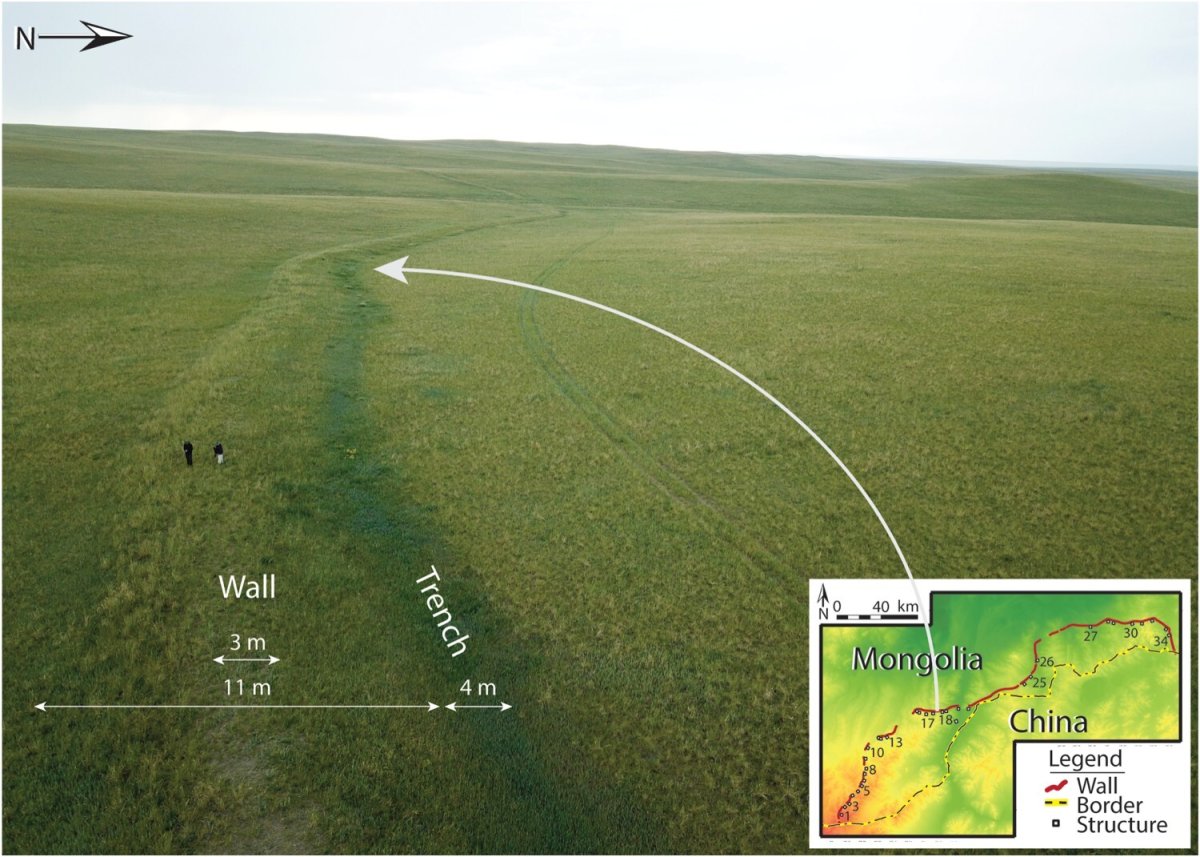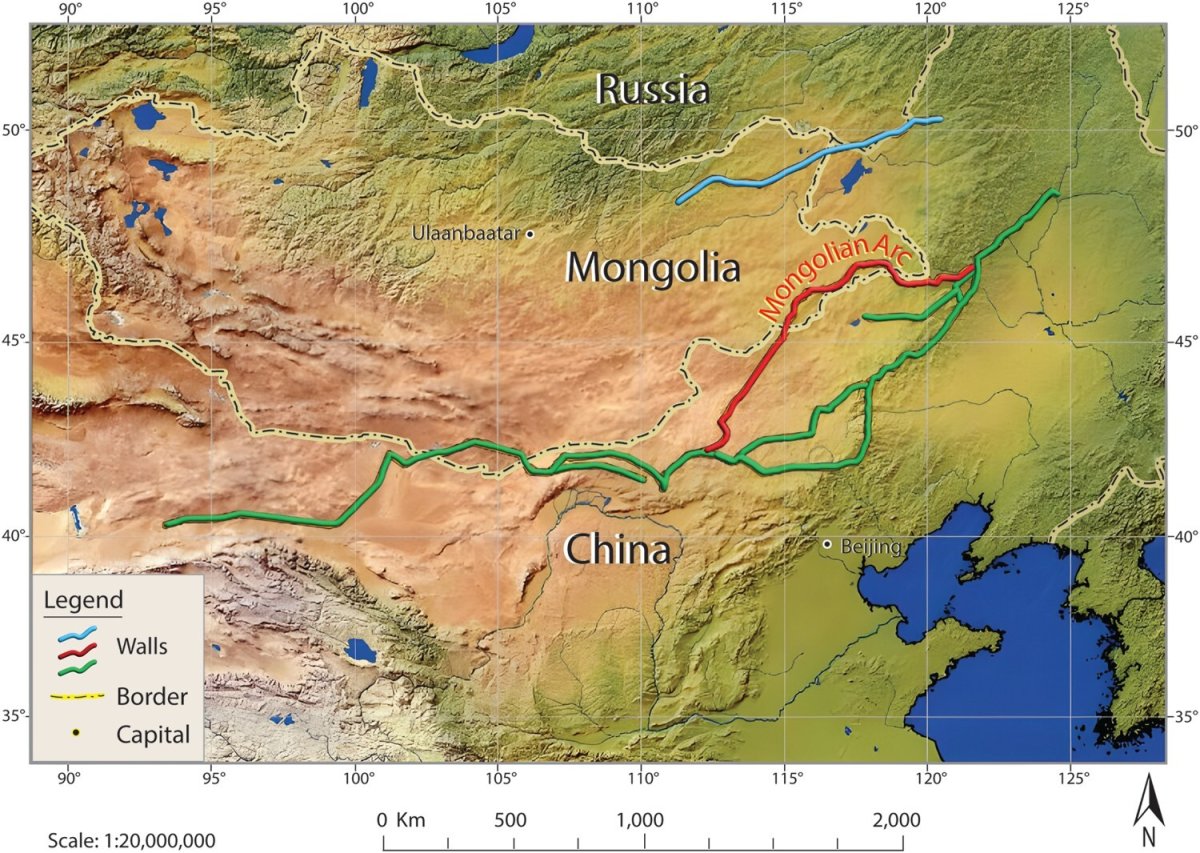Archaeologists studying a little-known stretch of the "Great Wall of China" have revealed new insights into the history of what is considered one of the largest engineering projects ever undertaken.
A team of researchers investigating one section of the defensive structure identified several large gaps, which shed new light on its purpose, according to a study published in the Journal of Field Archaeology.
While the "Great Wall" is often thought of as a single entity in the popular imagination, this colloquial term is slightly misleading. It actually refers to an extensive series of defensive fortifications stretching for thousands of miles across what is now northern China and southern Mongolia, rather than a single wall.
The walls and other defensive structures that make up this complex network were built during various periods over the course of two millennia.

The earliest sections were constructed in the 7th century B.C. but it was not until the 3rd century B.C. that Qin Shi Huang—the first emperor of a united China—connected a number of existing walls into a single system to defend against invasions from the north.
Construction continued right up until the Ming Dynasty, which spanned the years 1368-1644. The most extensive and best-preserved portions date to this period.
The majority of recent research has focused on the sections built during the Ming and and Han dynasties (202 B.C.–A.D. 220). But the section that the researchers of the latest study focused on—which they refer to as the "Mongolian Arc"—has received little attention and is one of the least understood.
This wall section stretches for around 250 miles in an arc-shaped line, running more or less parallel to the China-Mongolia border, through the eastern Mongolian provinces of Dornod and Sukhbaatar.
This section is part of a larger wall system that is thought to have been built sometime between the 11th and 13th centuries. The authors of the latest study refer to the wider network as the "medieval wall system" (MWS). The system consists of earthen walls and associated structures, including trenches, forts and beacon towers.
The section of the MWS that the Mongolian Arc belongs to has previously been associated with the Jin dynasty (A.D. 1115–1234) and is believed to have been built during this period. But this dating has never been proven conclusively.
The MWS is "one of the most enigmatic long wall and trench systems in the history of China and Mongolia," the authors wrote in the study. "In spite of its scale and complexity, it is unclear when exactly it was built, who built it, and for what purpose. It is not even clear whether the entire array of walls was built at the same time or if, as we now hypothesize, it is an accumulation of different projects built over a long period of time."

The aim of the latest research was to comprehensively document and provide a preliminary analysis of the Mongolian Arc section, which has largely been overlooked in academic discourse. This is perhaps because it is located in remote areas, while also not being visually impressive.
"If mentioned at all, this wall section and its associated structures are either unrecognized or incompletely and inaccurately documented in existing literature," the authors wrote.
For their study, the team analyzed various types of satellite images, Chinese atlases and Soviet maps relating to the MWS. With this data, they created a better map of the Mongolian Arc and its associated structures. In July, 2022, the team also conducted a field survey of this section, exploring the wall and its structures on the ground for the first time.
These results were combined with excerpts from relevant primary sources to provide a preliminary interpretation of the design and potential functions of the Mongolian Arc.

"The key findings are the full and accurate documentation of this wall section, which was never studied before," Gideon Shelach-Lavi, a professor in the Department of Asian Studies at the Hebrew University of Jerusalem in Israel, and an author of the study, told Newsweek.
"The data we collected helped us understand the scale of this monument, including not only the wall-line itself but also the associated structures," he said. "It also enables us to better understand the function for which it was constructed."
One of the key findings that the team made was the identification of large gaps in some areas. Observations indicated that these gaps were not caused by natural processes—suggesting that walls were never built in these locations in the first place.
It appears they are too wide to have been designed to allow people through intentionally. And the researchers say the gaps could have undermined the effective functions of the wall system.
While the reason for these gaps has yet to be confirmed, the researchers suggest possible explanations: one is that the Mongolian Arc was built hastily during the final years of the Jin dynasty to defend against expected Mongol invaders. As a result, some parts may not have been finished.
This argument has been proposed by historians previously, but the latest research provides what may be the first archaeological evidence in support of this "hasty wall building" hypothesis.
However, the researchers also found some evidence that the primary purpose of the Mongolian Arc may not have been to protect against invaders, but rather was more concerned with controlling the movement of people. The authors say they are planning future research to test some of their hypotheses.
"Analysis of the wall line itself and the location of the accompanied structures suggests that this system was not meant to stop invading armies but rather to monitor and control the movement of people, including perhaps mobile groups of herders," Shelach-Lavi said.
"The 'hasty wall building hypothesis' associates this wall with the invasion—or anticipated invasion—of the army of Genghis Khan. Currently, this seems less likely to me than the idea that this wall was part of the efforts of the Jin to control the movement of people, including nomadic tribes."
Update 1/9/24, 8:20 a.m. ET: This article has been updated with comments from Gideon Shelach-Lavi.
Uncommon Knowledge
Newsweek is committed to challenging conventional wisdom and finding connections in the search for common ground.
Newsweek is committed to challenging conventional wisdom and finding connections in the search for common ground.
About the writer
Aristos is a Newsweek science reporter with the London, U.K., bureau. He reports on science and health topics, including; animal, ... Read more
To read how Newsweek uses AI as a newsroom tool, Click here.








